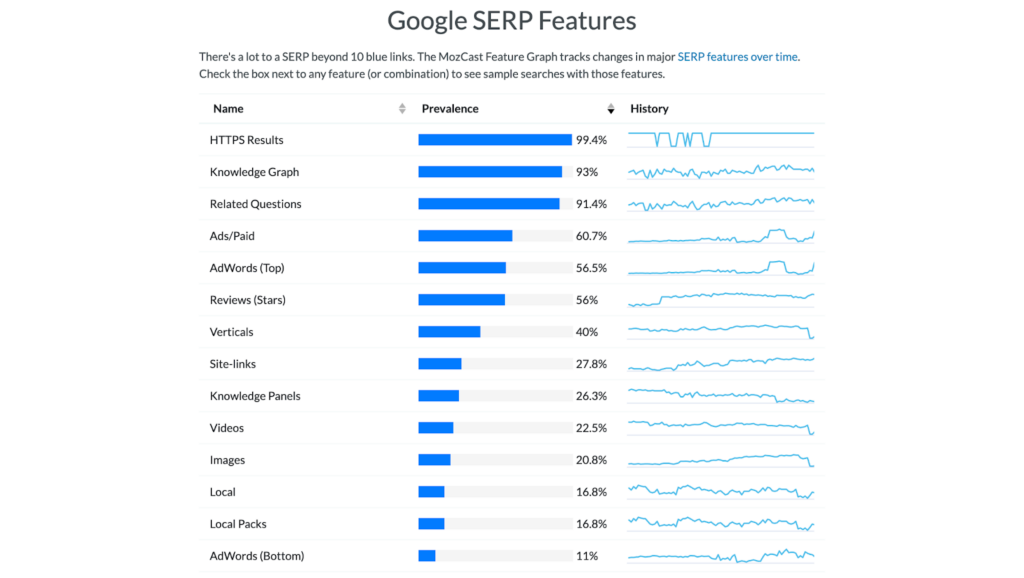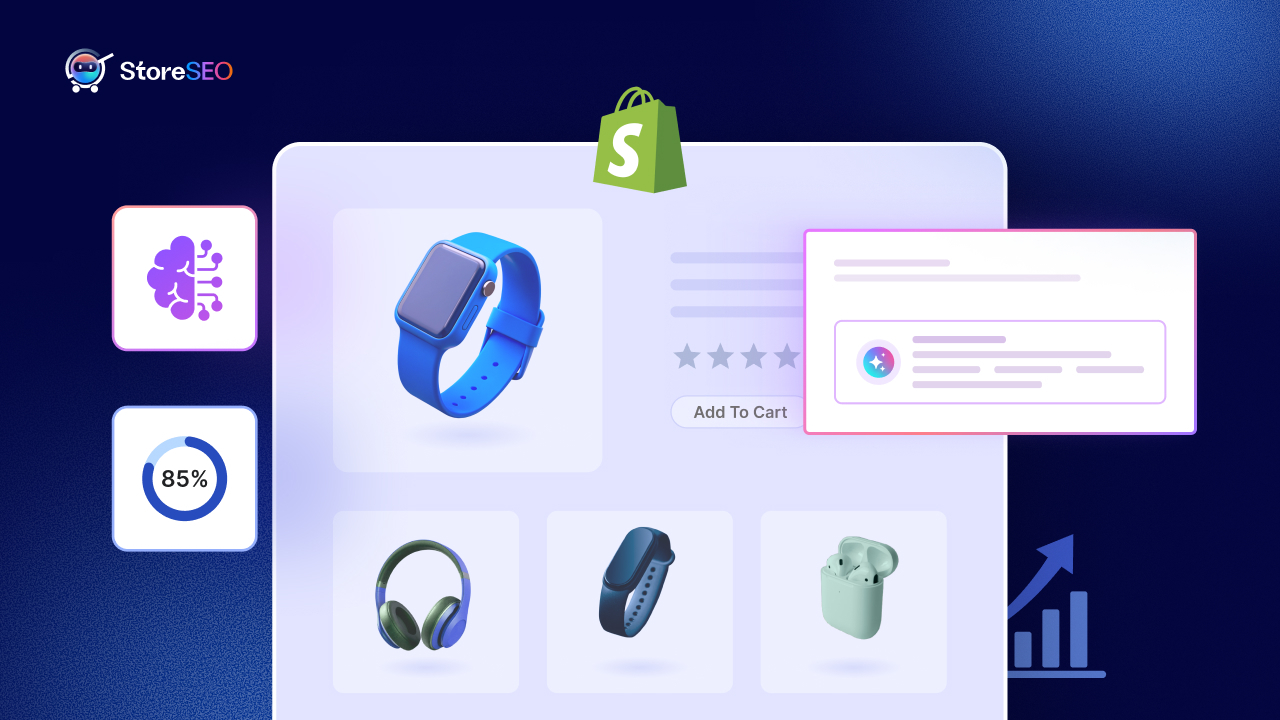Did you notice any sudden drop in rankings no matter how hard you have tried to rank something on Google SERP (Search Engine Result Page)? On the contrary, have you ever been surprised to see that all of a sudden you ranked at the top of search results with a keyword that you have been targeting for a long? All these unexpected changes happen due to SERP volatility — a critical yet unavoidable consideration in the search engine world. In the comprehensive guide, we will let you know what it is, why it is important to take into consideration, the reasons behind it & tips to overcome it. Let us dive in.

What is SERP Volatility?
The term simply refers to the dramatic fluctuations (increase/decrease) of rankings for any webpage on Google SERPs. It is undoubtedly frustrating for website owners because the impact of it directly affects the website traffic. These significant fluctuations in SERPs can either be hopeful or alarming when they happen.
Though it is a big challenge to maintain and keep an eye always on SERP volatility, a strategic plan can be a solution to overcoming this. All you need to understand is its root causes and the solutions available to deal with them.
Last year, Semrush conducted a study on SERP volatility for common industries in the U.S. They analyzed the top 20 search results over a month and found an average volatility of 4.8 for both desktop and mobile. This means that, on average, web pages moved up or down 4.8 positions during that period.
SERP volatility happens because search engines are figuring out which pages are useful for users. With billions of pages online, search engines need to choose which ones to show and in what order. They do this by moving results around and seeing if people click on them and find them helpful.
To this point, we know what SERP volatility actually but now the question arises as to why this is important for you to know its depth.
Why It is Important to Know About SERP Volatility?
Imagine you are an SEO professional, then it is obvious that you spend a lot of time increasing your clients’ traffic and visibility day after day, month over month and even year over year. To do so, you must pay attention to SERP volatility because it is directly connected to your clients’ visibility and search performance.
Most of the brands depend on branded/non-branded keywords to drive traffic and conversions to their web pages which results in ultimate business value. And all of a sudden, all your efforts went in vain because of dramatic changes in SERP results. The situation will be devastating for you if you lose your rank.
What are the reasons behind SERP volatility how can you deal with this situation is part of the following discussion but all we want to let you know is that you understand SERP volatility is important & you have to take it seriously.
What are The Reasons Behind SERP Volatility: 5 Important Ones
The causes behind SERP volatility are many to mention. In the following, we will let you know the most common but important ones that you need to address while dealing with such situations.
1. Frequent Algorithm Updates
The first and foremost reason behind SERP volatility is algorithm updates. For example, updates like the March 2023 Core Update to Google were a big update that led to a high SERP volatility. The update was that only high-quality content that meets the user intent would rank high on Google SERPs. This is why, the SERP results were shaken by a significant effect.
Algorithm update is not only one of the main reasons, in fact, it is the central reason behind SERP volatility. Google is always working to provide the best end-user experience. However, some updates may go unannounced by Google because of being a smaller update. But the larger updates always create chaos in SERP results. That is why, you need to always keep an eye on the major algorithm update.
With these updates, the ultimate aim of Google is to provide the user with the best experience in every search. Needless to say, you have to adjust yourself with these updates to remain a strong contender in this SERP rank competition.
2. User Behavior
Another important cause behind SERP volatility is user behavior. Google always thinks of its users, so the rankings can change depending on people’s interaction with the search results. When users search for anything, Google tries to provide the best relevant results so that users get a great experience. So, we can say that user behavior is so important that can even influence what is relevant or what is not.
For example, if any user spends a huge amount of time on a particular web page by searching for a specific keyword, that page will get ranked higher with that keyword because Google sees that web page as a relevant one. After all, it fulfilling user queries.
To understand user behavior’s impact on ranking, there are some metrics you can take into consideration:
- Click-Through Rate (CTR): CTR refers to the percentage of the people who click on your ULR once it appears in the search result. To get a good click rate, make sure to write engaging and relevant title tags and meta descriptions.
- Engagement Rate: Once you get the click, now it comes to how much people are interacting with your site. How to measure — it can be counting likes and shares to your posts.
- Time On Site: After entering your website or any specific page how much time people are spending there is something that refers to time on site. To improve this, all you need to make quality content with appealing images, videos, GIFs, etc.
- Bounce Rate: This is very alarming! The bounce rate indicates the percentage of people who arrive at your site but leave without spending any time. If the bounce rate is high, it suggests that your content is not up to mark and not meeting users’ expectations. That is why, you need to make sure your content is relevant enough and it has the power to engage your audience.
3. Different User Intent
When people search for things, Google always tries to show helpful results. But there are times when people search with the same KWs with a different purpose. For example, if anyone searches ‘Email Marketing’ a very generic keyword, they might look for what it is, how to start, where to start, and tools that can help to start, etc.

However, Google always wants websites to match what users are actually looking for. So, it is better to write about specific things instead of genetic ones.
4. High Competiton with Keywords
The harder it is to find a word, the more people will want to use it. These popular words change a lot and high potential for SERP volatility. So, you need to plan how to use them and watch them closely on a regular basis.
5. Topics in Trend & SERP Feature Changes
Search engine results pages (SERPs) are subject to frequent fluctuations. Google’s continual experimentation with SERP features, such as Rich Snippets, can significantly impact result configurations. Additionally, the dynamic nature of trending topics influences search result composition.
How Can You Measure SERP Volatility – Best 3 Tools To Use
There is a wide range of tools available to measure SERP volatility. Among them, we have listed the most effective and usable ones by users below.
1. Mozcast
To look for SERP volatility, Mozcast is one of the most recommended ones by users. The most interesting feature of this tool is the weather report of it. This report actually indicates how turbulent the Google algorithm has been over the last three months.

If the weather shows a hotter and stormier report, it indicates the unpredictable nature of SERPs in the upcoming days. Another best part of the tool is that it is free to use and shows the actual report.
2. Semrush Sensor
While talking of SERP volatility tools, Semrush Sensor is another important and used one. The visualization of this is amazing, especially the switching process between mobile and desktop, countries, categories, and more. Plus, the tool has the ability to compare different SERP features, such as featured snippets, instant ads, and more.

3. Algoroo
In the list of SERP visibility tools, Algoroo also stands tall with its weekly winders and losers results. The tool displays reports aligned with the Google update dates which makes it easy to understand which update could have had an impact (either good or bad) on your site.

How to Deal With SERP Volatility: 6 Pro Tips
While dealing with SERP volatility, the first and most important tip is — do not panic, stay calm! Take your time to find out where the problem is and work accordingly. You will be back on track for sure. And to help you with finding the problem, below are some tips for you:
1. Monitor Your Visibility Constantly
To deal with SERP volatility there is nothing more important than monitoring your keywords constantly to see any changes in Google SERPs. Carefully review your landing pages to get an idea of what keywords and pages have been impacted. Plus, check whether your page meets the end users’ expectations or not.
However, reviewing lost backlinks, and your website loading time —- are basic but important to deal with SERP volatility. An important thing to mention: when you see any decrease in traffic it does not mean you are being hit by by Google core algorithm. Google is always adjusting the core update, so your decreased traffic may occur temporarily.
2. Optimize Your Website Properly for Mobile
Thousands of sites are available that are only focusing on desktop optimization and ignoring mobile optimization. After that, start wondering why the site has been hit by the update. Not only just optimization but there are also sites still not passing Core Web Vitals (CWV).
Undoubtedly, failing to optimize for mobile can lead to a traffic drop because users are seeking a better mobile experience nowadays. Those days are gone when everything is desktop-focused.
3. Keep Tracking Websites Changes & Fixing Technical Issues
There is a habit from developers that you may agree with us — they (developers) often make site updates (obviously needed for any purpose) without informing the SEO team. By doing so, if changes happen to title tags, page headers, or URL structures; the rankings and traffic drop drastically.
So, it is imperative to have proper communication between developers and SEO experts while making any technical changes to the site. Keep track and fix technical issues while being kept in the loop.
4. Look Back To Your Previous Data
Overlooking previous/historical data is one of the critical aspects for brands and SEO experts. While you look back to your historical data, you can unveil KWs and pages that had high performance once but slipped from SERPs and may have had a few minor issues.
Minor issues may include outdated content, technical issues, or as a whole; the content strategy was poor. Not just these, you may have lost high-quality backlinks that could lead to a drop in SERPs. Needless to say, reviewing previous data is essential to deal with SERP volatility.
5. Verily Analytics Configuration Properly
Agreed or not – misconfigured analytics happened? Misconfigured analytics, the absence of tracking code on new page templates, or somehow tracking code completing has been removed from the page templates.
To deal with SERP volatility, you need to make sure the tracking codes are present on all web pages of your site and the code is accessible to search engines.
6. Do A Comprehensive Site Content Audit
If it lacks— user engagement with the website content, the search visibility will decline. You need to examine your site’s content thoroughly. Question yourself! Do you feel the content is maintained the high-quality? Does your content well enough to offer the value, transparency and information that users need? Have you maintained the search result need?
How? Simply compare your content with your competitors that are ranked high in SERPs & find a way to outrank your competitors. Search for missing components that competitors had.
A jack of all truth — if your content can not engage your audience and not provide the information they need, Google will not prioritize you in search results. All you need to do is create high-quality and helpful content. To do so, you can follow the E.E.A.T guidelines.
Keep Your Eyes Open & Deal With SERP Volatility Well
There is no alternative to keeping yourself updated with Google updates if you own a brand, site owner, or marketers to see the fluctuations in visibility. The above-mentioned tool can help you track the changes and what needs to be done. As already said, do not panic. Make sure you have checked marked the above-mentioned tips too for dealing with SERP volatility.
Incorporate your SEO strategy properly and remember one thing, ‘Content is King.’ So write insightful content that helps users to solve their problems. Hope you enjoyed reading the blog. To get more SEO tips and tricks constantly, subscribe to our blog right away.









